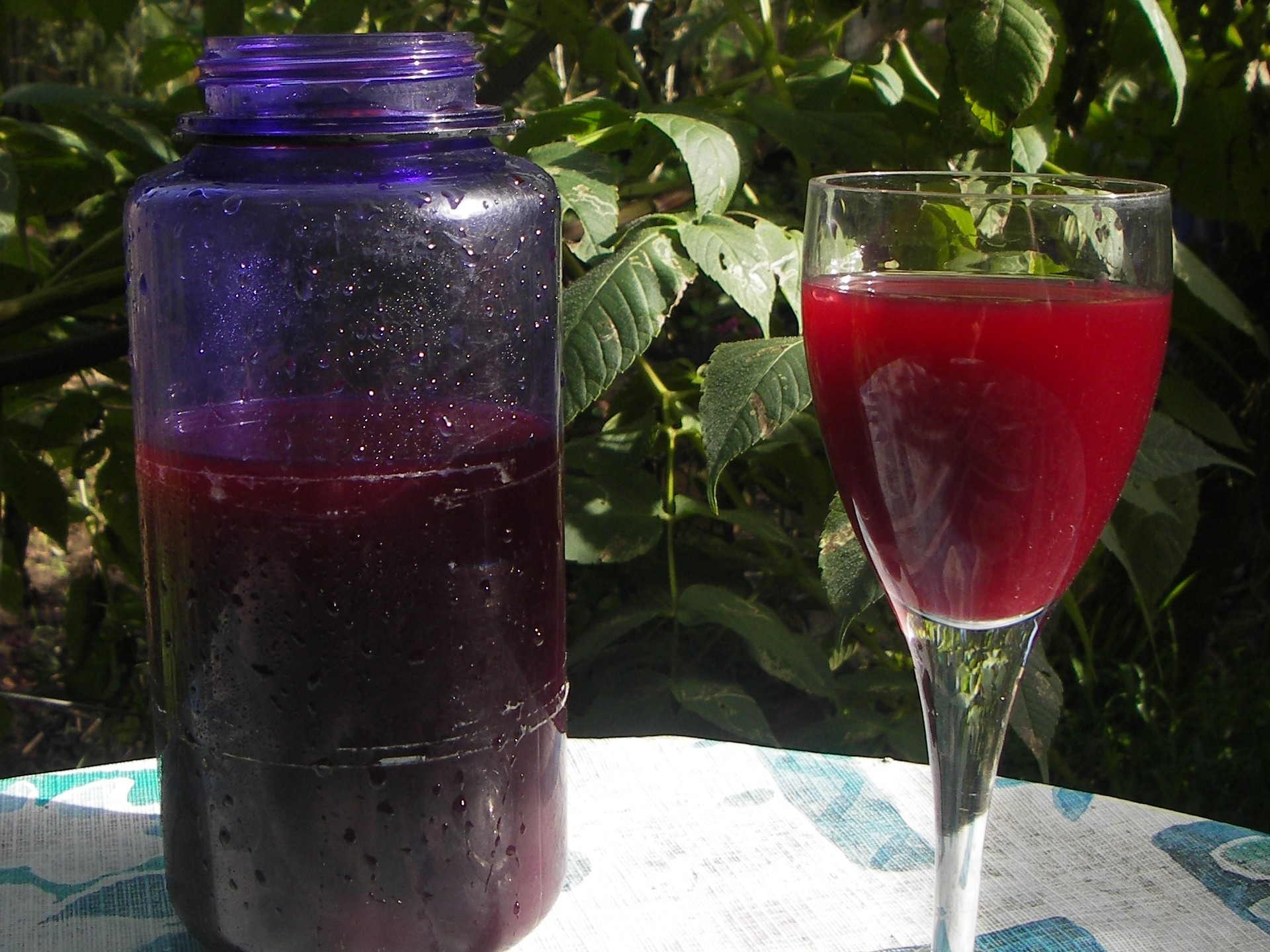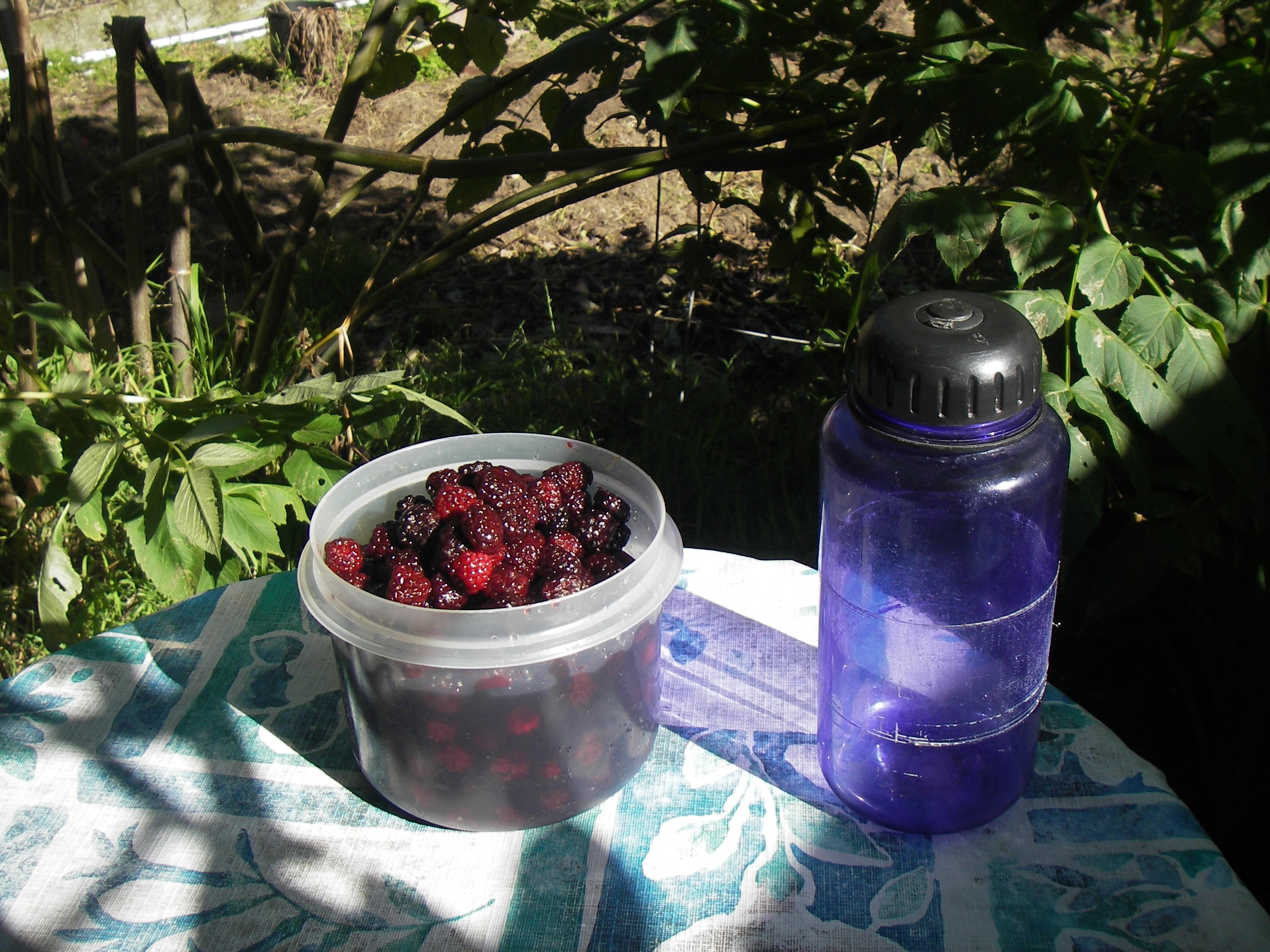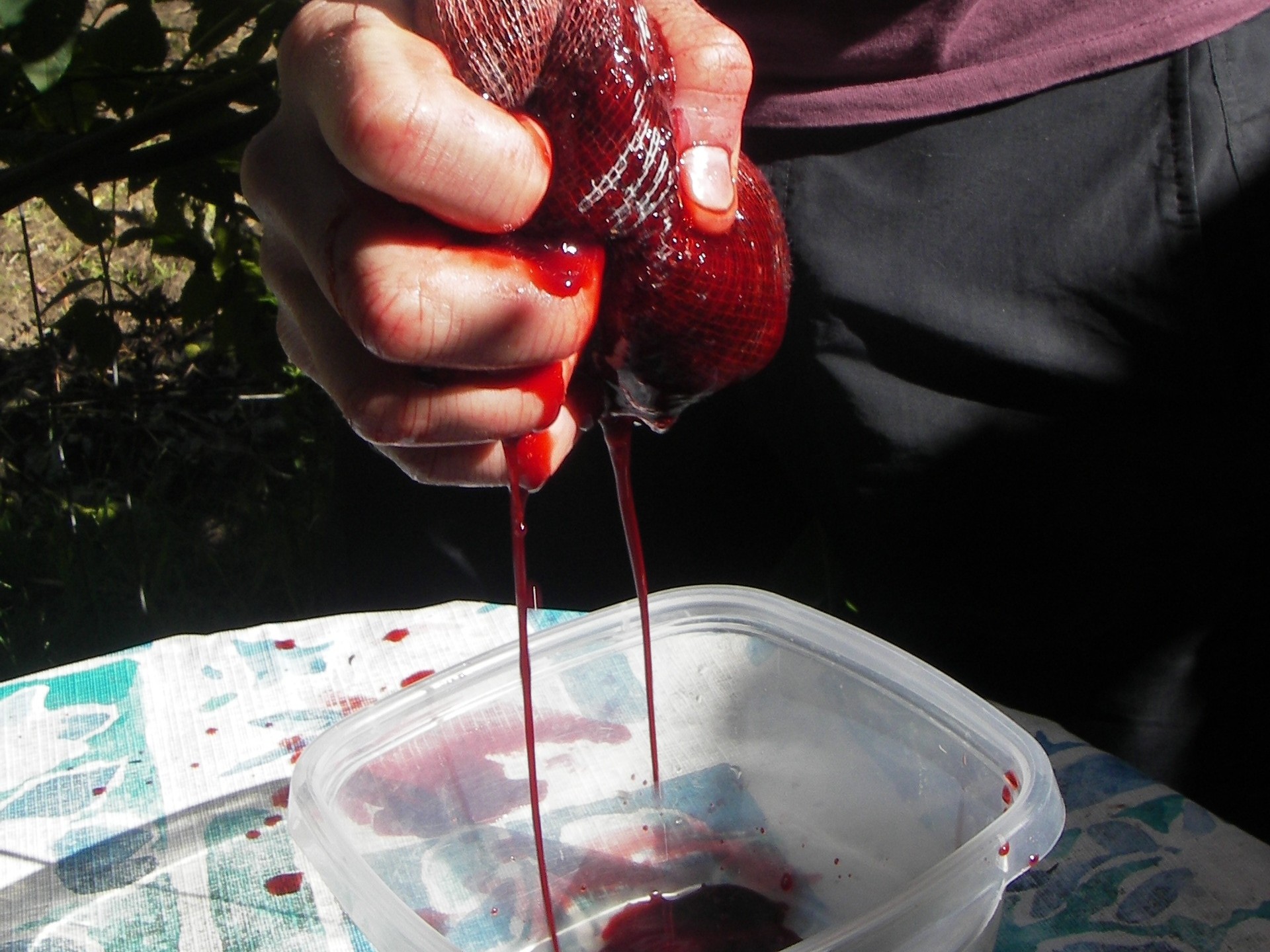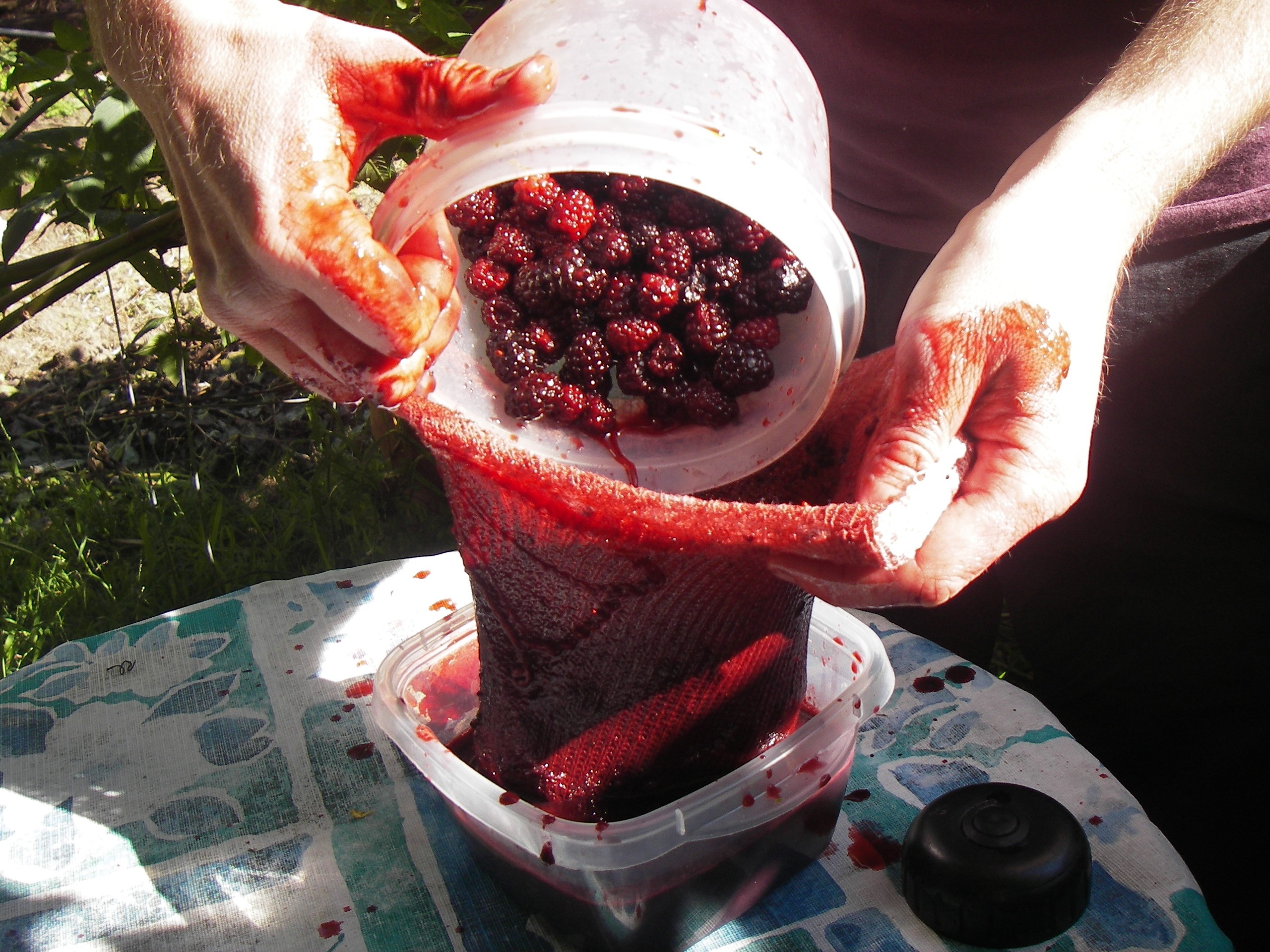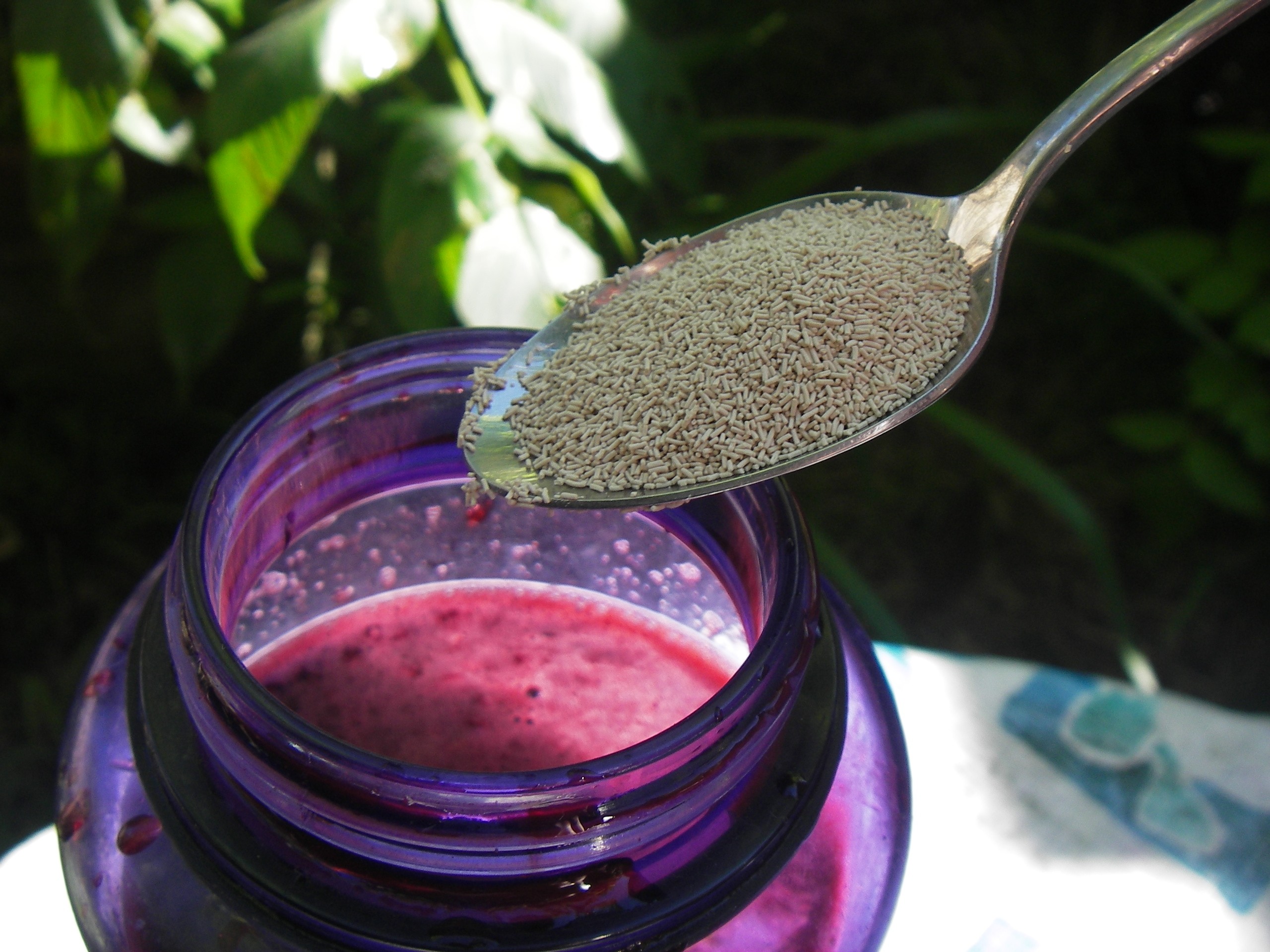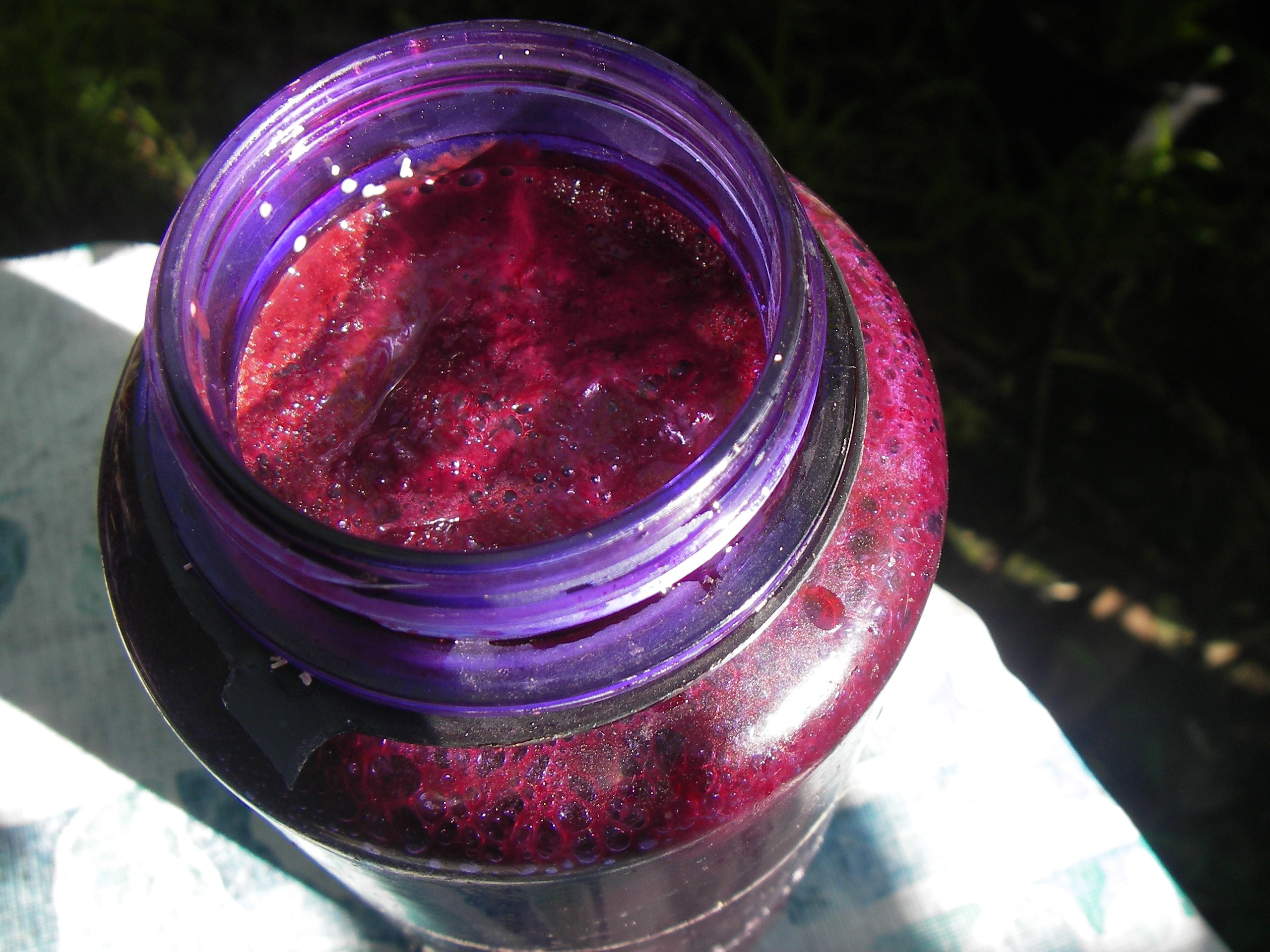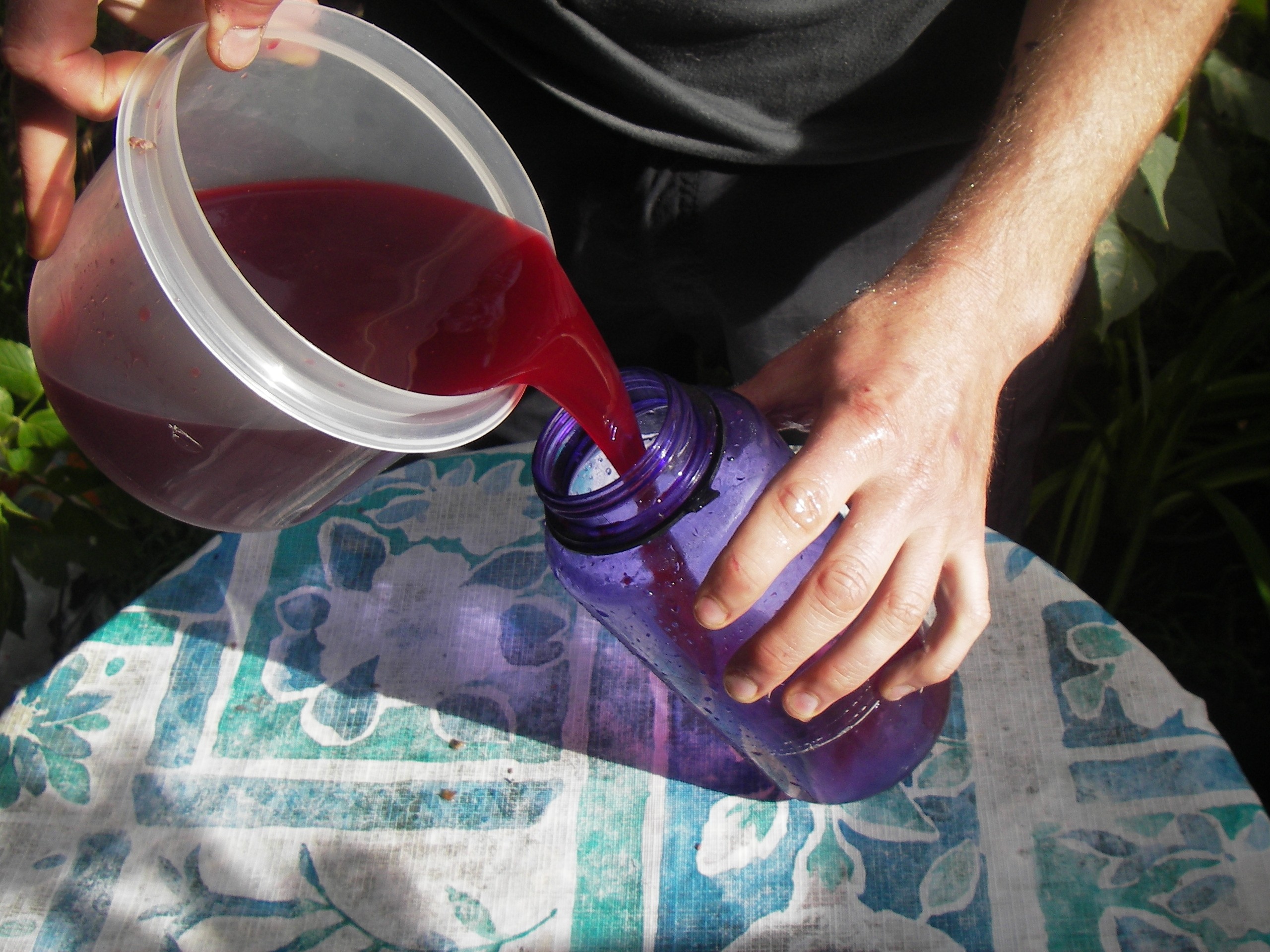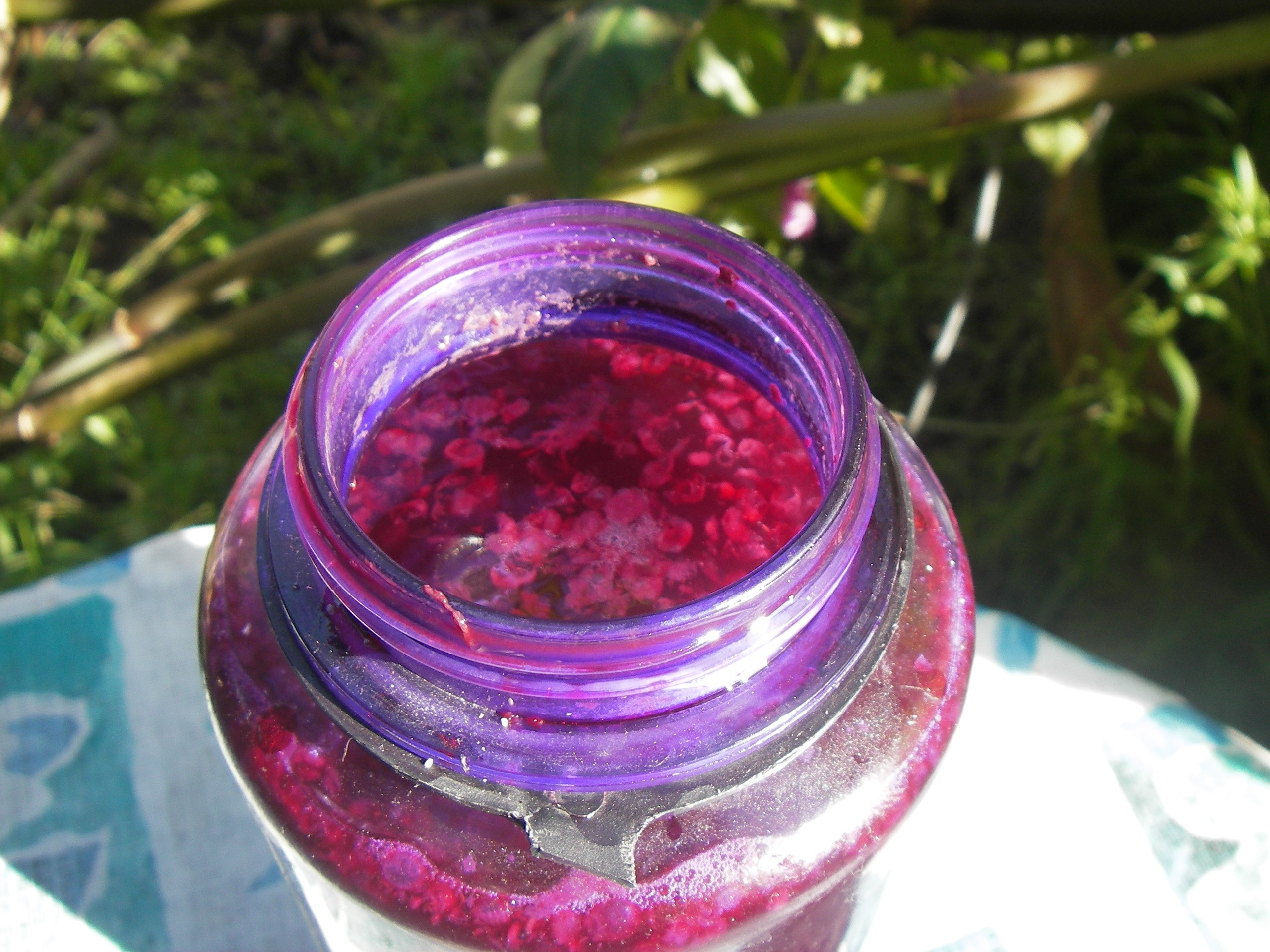In June 2006, I biked through Greece for seven weeks. The summer brings hot, arid conditions there, yet feral roadside fruit trees grow by the millions, particularly figs, cherries, and mulberries. The berries made for excellent road fare, but it occurred to me that mulberries also could make allowable wine. So I crushed the berries by hand, collected the juice in my 1-quart bottle, and added bread yeast to turn the fructose into our good friend, alcohol. I snugly lodged the bottle in a travel pannier on my bike while the juice fermented, and in four tries my results were consistent and potent: full-bodied, no-joke wine within one week — no corkscrew needed.
